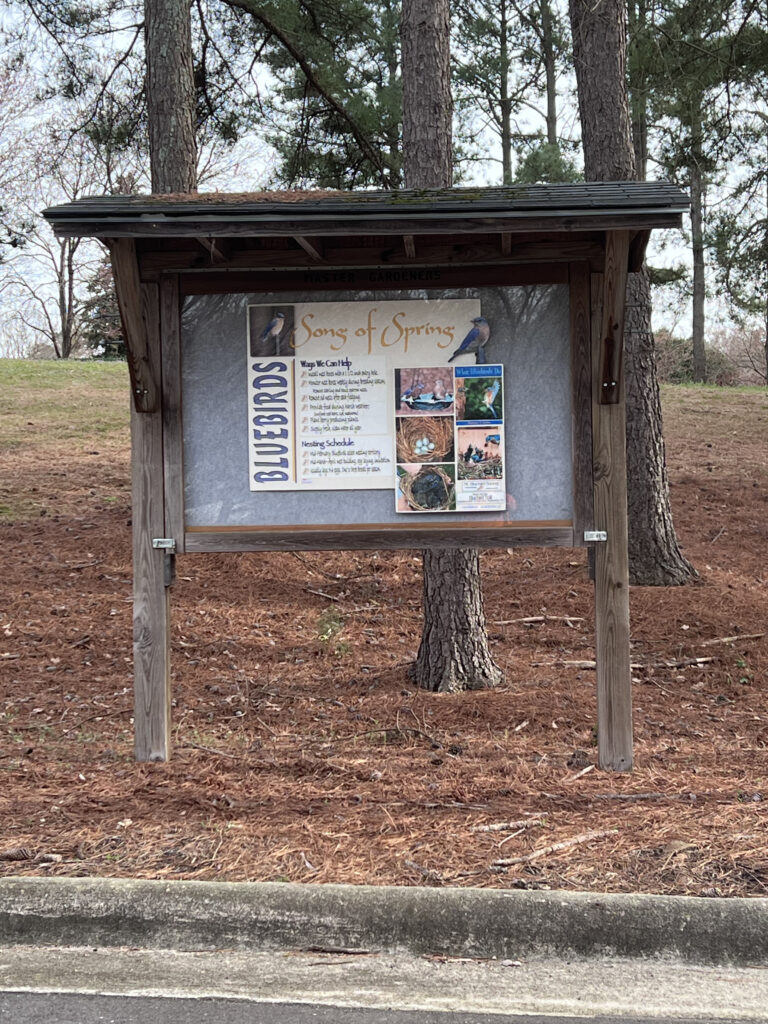Make Room for Bluebirds!
go.ncsu.edu/readext?992474
en Español / em Português
El inglés es el idioma de control de esta página. En la medida en que haya algún conflicto entre la traducción al inglés y la traducción, el inglés prevalece.
Al hacer clic en el enlace de traducción se activa un servicio de traducción gratuito para convertir la página al español. Al igual que con cualquier traducción por Internet, la conversión no es sensible al contexto y puede que no traduzca el texto en su significado original. NC State Extension no garantiza la exactitud del texto traducido. Por favor, tenga en cuenta que algunas aplicaciones y/o servicios pueden no funcionar como se espera cuando se traducen.
Português
Inglês é o idioma de controle desta página. Na medida que haja algum conflito entre o texto original em Inglês e a tradução, o Inglês prevalece.
Ao clicar no link de tradução, um serviço gratuito de tradução será ativado para converter a página para o Português. Como em qualquer tradução pela internet, a conversão não é sensivel ao contexto e pode não ocorrer a tradução para o significado orginal. O serviço de Extensão da Carolina do Norte (NC State Extension) não garante a exatidão do texto traduzido. Por favor, observe que algumas funções ou serviços podem não funcionar como esperado após a tradução.
English
English is the controlling language of this page. To the extent there is any conflict between the English text and the translation, English controls.
Clicking on the translation link activates a free translation service to convert the page to Spanish. As with any Internet translation, the conversion is not context-sensitive and may not translate the text to its original meaning. NC State Extension does not guarantee the accuracy of the translated text. Please note that some applications and/or services may not function as expected when translated.
Collapse ▲As spring approaches, we should make some room in our yards for Bluebirds. Bluebirds are one of many lawn birds, including cardinals and robins, who don’t migrate when things get chilly. Because of this, these birds need a place to stay, which has become increasingly difficult with urban development. Starting in February, Bluebirds search for a nesting territory. From mid-March to April, they build nests and lay there eggs, usually laying 3-6 eggs, and overall 1-3 broods per season. If you are interested in helping out our feathered friends, please consider the following:
- Install nest boxes with a 1.5 inch entry hole
- Monitor nest boxes weekly during breeding season
- remove Starling and Sparrow nests
- Remove old nests after each fledging
- Provide food during harsh weather
- sunflower seed hearts, suet, mealworms
- Plant berry producing plants
- Supply fresh, clean water all year
If you happen to visit the Wake County Office this month, take a look at the Bluebird display created by the Extension Master Gardener ℠ volunteers of Wake County. The sign, which contains several pictures of Bluebirds and lists the ways in which we can support them, can be found on the right at the entrance of the parking lot. If you have any additional questions, contact the EMG volunteers either at mgardener@wake.gov or give us a call at 919-250-1084!





